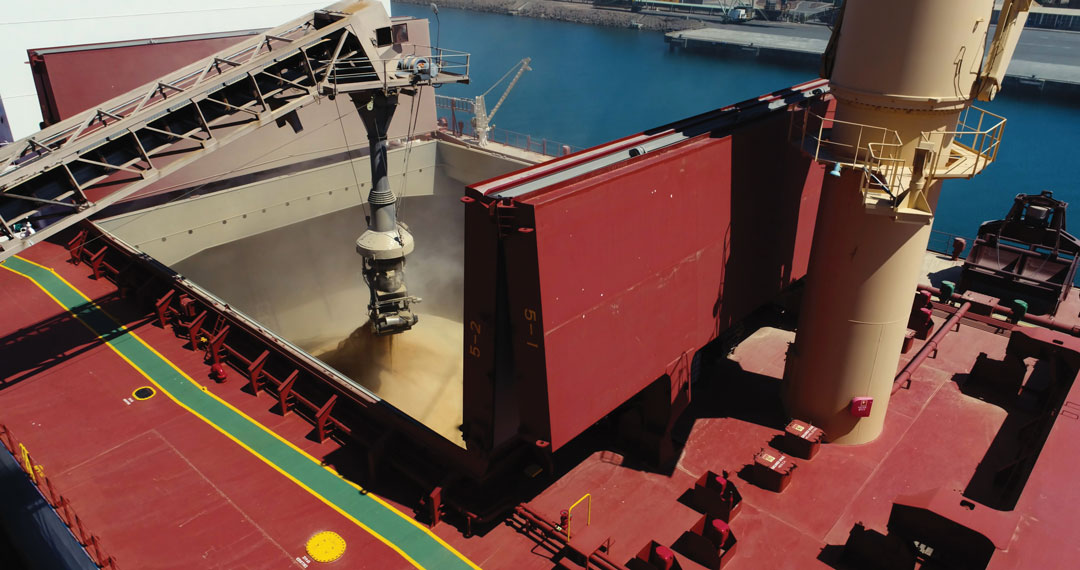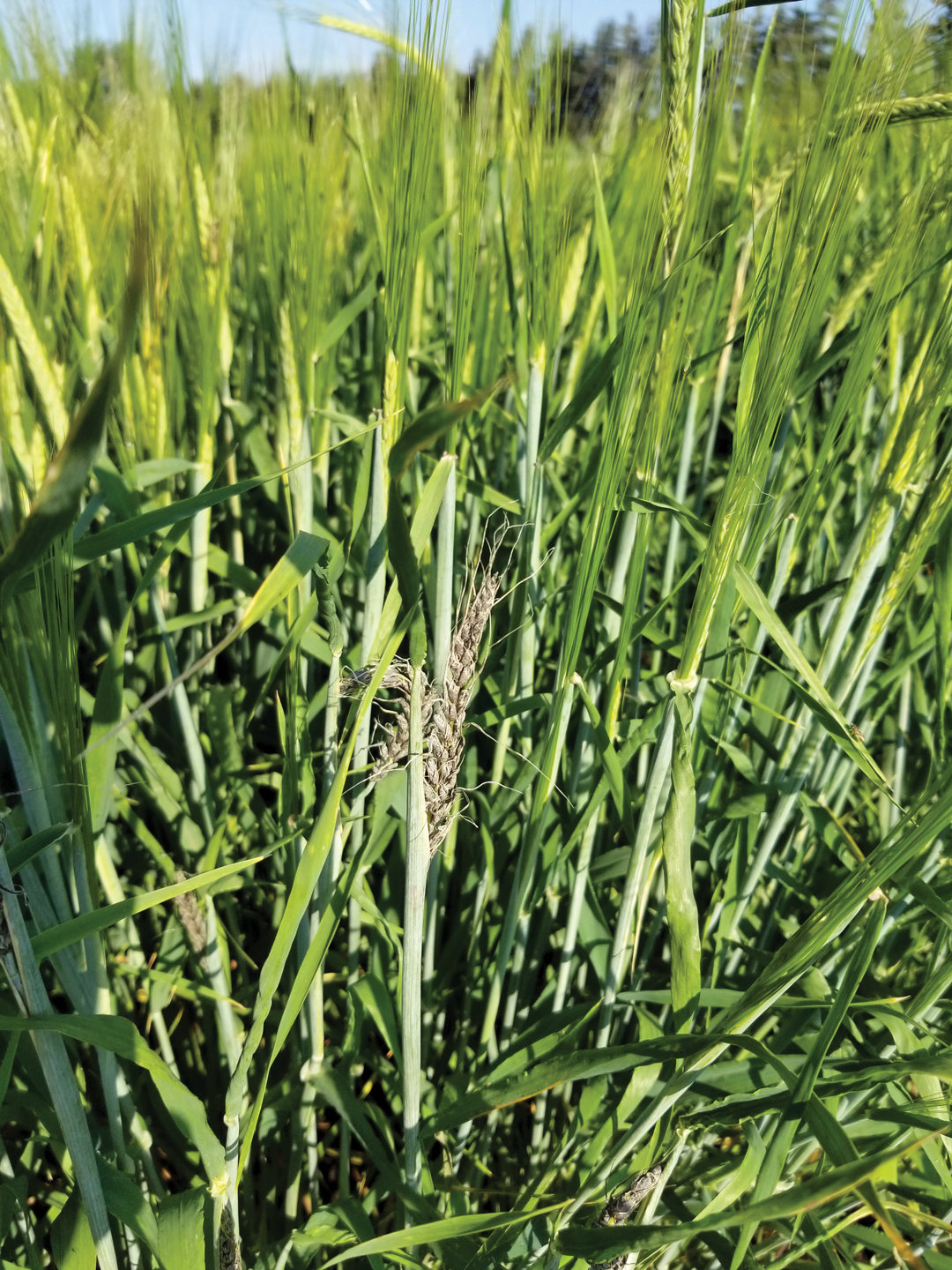DUPLICATION EQUALS DISCONTENT
BY GEOFF GEDDES • PHOTO BY SHUTTERSTOCK
Grain companies and certain industry groups would like to see Canadian Grain Commission’s (CGC) outward inspection practice halted. They insist it is a duplicate service, as these companies typically hire independent firms to complete grain inspections. Is it a matter of “double trouble” or “twice is nice?” It depends whom you ask.
“Today, about 70 per cent of grain exported overseas from Canada uses third-party certification as the basis of quality assurance,” said Wade Sobkowich, executive director of the Western Grain Elevator Association. “Over the last five decades, there has been a transition to the use of third-party inspections, mostly because of timelines, cost and flexibility.”
WHEN THIRD PARTIES ARE FIRST CHOICE
In part, third-party inspections appeal to buyers because they offer continuity when the same company tests at both loading and unloading, but the draw goes far beyond this. “International buyers are more accustomed to, and accepting of, private inspections versus government certification,” said Fraser Gilbert, business development manager at SGS Life Science Services in Winnipeg, MB, an international testing, inspection and certification company.
“The reality is many buyers simply don’t trust a situation where a country is selling them grain and that country’s government is vouching for the grain’s quality,” said Gilbert. “Private companies can also test to international standards established by particular nations and test for specific aspects such as falling number or oil content.”
As well, if a buyer needs testing at 6 p.m. on Friday and it cannot wait until Monday morning, third-party testers are better able to accommodate such requests than government agencies.
KNOW YOUR LIMITS
“When private inspection companies first came on the scene in Canada, they were immediately embraced by foreign buyers, and for good reason,” said Gilbert. “The CGC is just not equipped to handle many of the testing requirements that other countries put forth. As soon as other countries realized companies such as ours could fill that void, they began reaching out to us on a regular basis. It’s a situation that begs an obvious question: If buyers don’t want government testing of the grain they purchase from us: Why is the CGC still insisting on doing it?”
According to many in the industry, a more logical approach would be to have CGC accredit and oversee third-party inspection companies, rather than performing the inspections directly.
“The CGC has an inherent conflict of interest when it serves as both the regulator and service provider,” said Sobkowich. “We do not want to detract from their ability to set grades, as that is a vital element for both buyers and sellers, and that should be their core function. From there, they should accredit third parties to grade to those standards. This would reduce costs for industry and farmers by introducing an element of competition in both service and price while also providing more consistency throughout the supply chain.”
Eliminating duplicate inspections and transitioning the role of the CGC is top of mind for farm groups such as the Alberta Wheat Commission (AWC) and Alberta Barley. “Getting CGC out of the testing business has been discussed at length by our wheat and barley boards,” said Geoff Backman, AWC manager of business development and markets. “In years where there is more grain exported than was expected, it produces a surplus of inspection fees. That money represents grower dollars that could have been applied to farming enterprises. We have continually seen these funds added to the surplus of the CGC, to the point where they now amount to over $100 million. This is even harder to justify when you consider we aren’t seeing CGC provide any testing that third parties cannot also supply; in fact, it’s just the opposite.”
From the CGC perspective, there are additional factors to consider.
A DOLLAR DILEMMA
“One challenge is that CGC costs in general are recovered largely through our inspection services,” said Rémi Gosselin, CGC manager, corporate information services. “If you change our operating model, you will need a new funding mechanism for the organization. I know this change has been thrown out there for consideration, but from a government policy perspective there must be a well-thought-out alternative for supporting CGC activities in the absence of revenue from inspections.”

In Gosselin’s view, a robust cost analysis is needed to determine whether the elimination of CGC inspections would create any cost savings for the grain sector. “We have some buyers of grain who still demand government inspections, as well as other buyers who may not be aware that our government offers such inspections,” said Gosselin. “There are also certain countries that don’t require as high a quality of grain and thus lack the need for the level of assurance provided by a government test. It comes down to an awareness of CGC services and determining exactly what buyers require.”
At present, the CGC draws on two main sources of funding aside from inspection driven revenue: appropriation by federal vote for the organization’s Grain Research Laboratory, and a funding allowance also provided by the taxpayer.
“We understand that inspection fees help fund the Grain Research Laboratory, and that those fees are ultimately passed on to producers,” said Backman. “We would like to see federal funding increased to fully fund the lab, rather than have it subsidized by Canadian farmers.”
Backman also envisions a model where farmers directly fund CGC operations in a more transparent manner. This would contrast with the current method of indirect funding where costs are hidden in the grain basis (the difference between a local cash price and the futures market price for that commodity) or in the prices that farmers are paid for their grain.
“This more direct approach would allow the CGC to incorporate any accumulated surpluses from previous years in its annual funding and stop the continual accumulation of surpluses of farmer funds,” said Backman.
Whatever the ultimate strategy may be to support the CGC while providing inspection solutions for grain buyers and sellers, industry can’t wait to put it to the test.







Comments